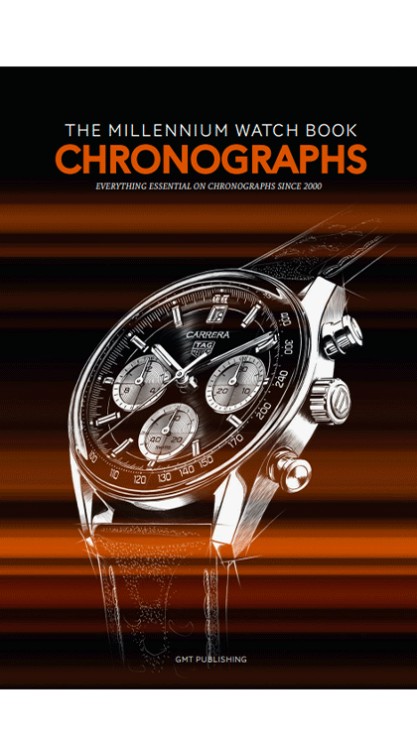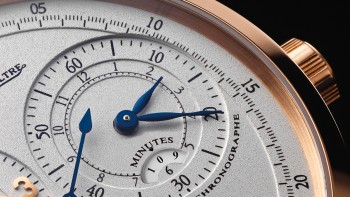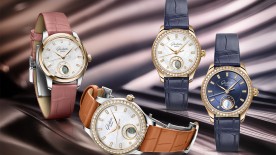Watch movements are like a puzzle in which moving any one piece involves shifting the others around too — and that is exactly where Jaeger-LeCoultre’s solution comes into its own. A good calibre is all about compromise; putting two in a single timepiece results in fewer tradeoffs, particuarly between power and accuracy. That insight gave rise to the Dual-Wing concept, involving one watch and two (almost) independent movements.
THE LONG ROAD
The Manufacture embarked on the task in 2005 and the first completed result appeared in 2007. The Dual-Wing concept was then introduced in a collection specially designed to house it: Duomètre, and the first model to be unveiled (at the 2007 Salon International de la Haute Horlogerie) was the Duomètre Chronograph.
The principle is quite easy to understand. The chronograph is a complication that’s very power-hungry when in use. Triggering it results in a loss of torque and thus a decrease in amplitude. Previously, to prevent movements losing amplitude they were designed to be more powerful, able to absorb the chronograph being activated without this affecting the accuracy of the hours, minutes, and seconds.
Jaeger-LeCoultre had a different and very clever idea: putting two movements in one and the same watch. One is devoted to the conventional time display and runs constantly. The other is used only for the chronograph, and is activated only when the complication in question is triggered. The result is two independent mechanisms united by a single regulating organ.
The two mechanisms operate in perfect harmony, ensuring both performance and accuracy — as evidenced by the unusual 1/6 seconds display. Each barrel has its own power-reserve indicator, at 5 o’clock and 7 o’clock respectiely.
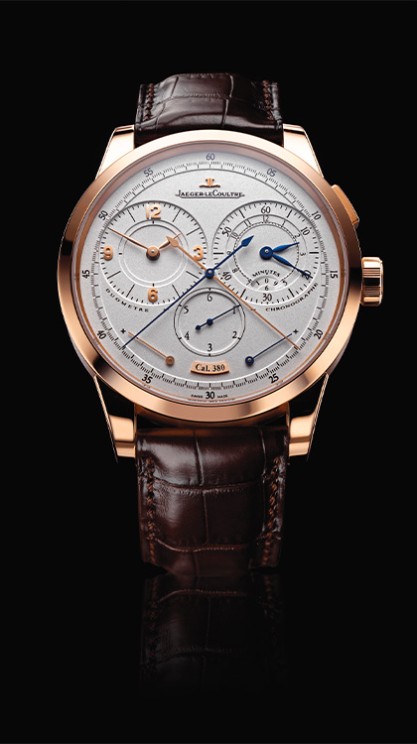
CREATING CALIBRE 380
The first movement to use this design principle was Jaeger-LeCoultre’s Calibre 380, the main benefit being the ability to display the time with chronometer-worthy accuracy. Using the Dual-Wing concept, one gear train is dedicated to conventional time-telling with hours, minutes and seconds, while the second is given over to the chronograph function, with a jumping seconds hand marking out sixths of a second.
Both mechanisms are powered by their own barrels, providing a 50-hour power reserve for the time and 50 hours for the chronograph, with no transfer of energy between the two. The use of Calibre 380 means this Duomètre is the first chronograph to dispense with the need for a clutch to control the timing stop/start functions; just one pusher synchronises all five counters.
To make the piece simpler to use and preserve the overall design, a single crown serves to wind both barrels: rotating it clockwise winds the time-telling movement, while an anti-clockwise turn winds the chronograph.
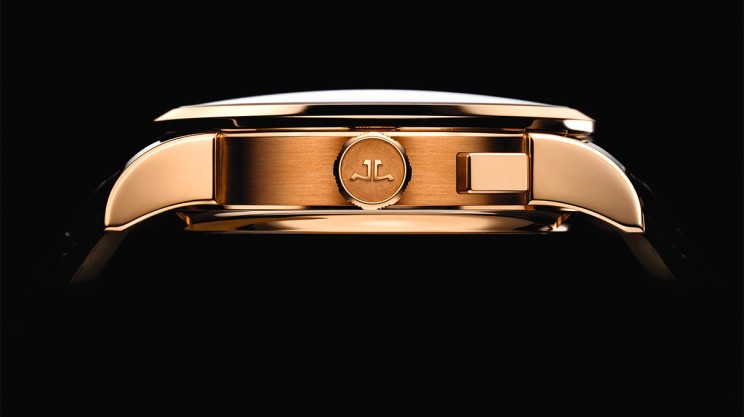
VARIATIONS ON A THEME
Making the first iteration of the Dual-Wing concept a chronograph was a smart move on the part of Jaeger-LeCoultre: this complication has the biggest impact on a movement’s operation once activated, so the feat immediately demonstrated that the Manufacture was capable of solving the most important problem: the loss of amplitude caused by the chronograph.
Jaeger-LeCoultre went on to use the Dual-Wing concept in other complications, such as the Moon Phase with its Duomètre Lunar Calendar (date and Moon Phase, 2010) and grand complications for its Duomètre Sphérotourbillon (2012) and Grande Sonnerie Duomètre (2009).
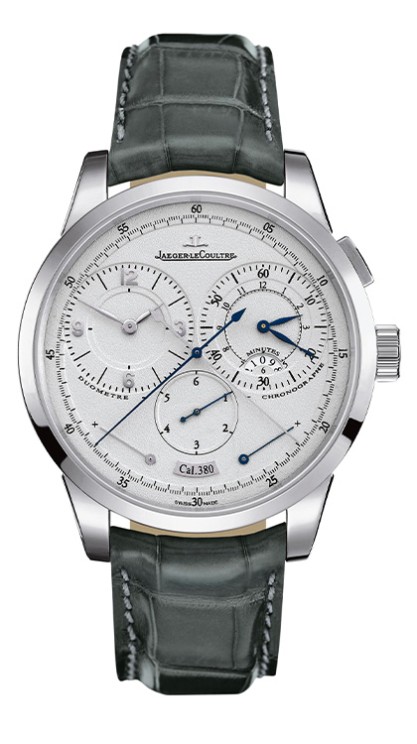
Jaeger-LeCoultre Chronograph Duomètre
CASE: rose or white gold, sapphire crystal and caseback, water-resistant to 50m
DIAMETER: 42mm
MOVEMENT: mechanical, hand-wound Jaeger-LeCoultre 380 Calibre, 445 components, 21,600vph, two independent barrels, each with a 50-hour power reserve
FUNCTIONS: hours, minutes, seconds, chronograph, jumping seconds hand, dual power reserve indicators
DIAL: opaline magnetite grey, gold-plated applied hour-markers
STRAP: matt chocolate brown leather, gold double folding clasp
LAUNCH YEAR: 2007
This year GMT Magazine and WorldTempus have embarked on the ambitious project of summarising the chronograph since the year 2000 in The Millennium Watch Book - Chronographs, a big, beautifully laid out coffee table book. This article is an extract. The Millennium Watch Book - Chronographs is available in both French and English here.
